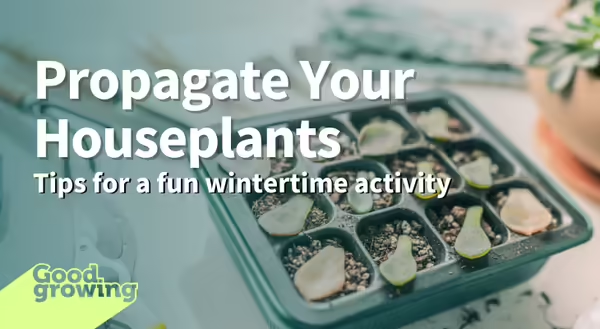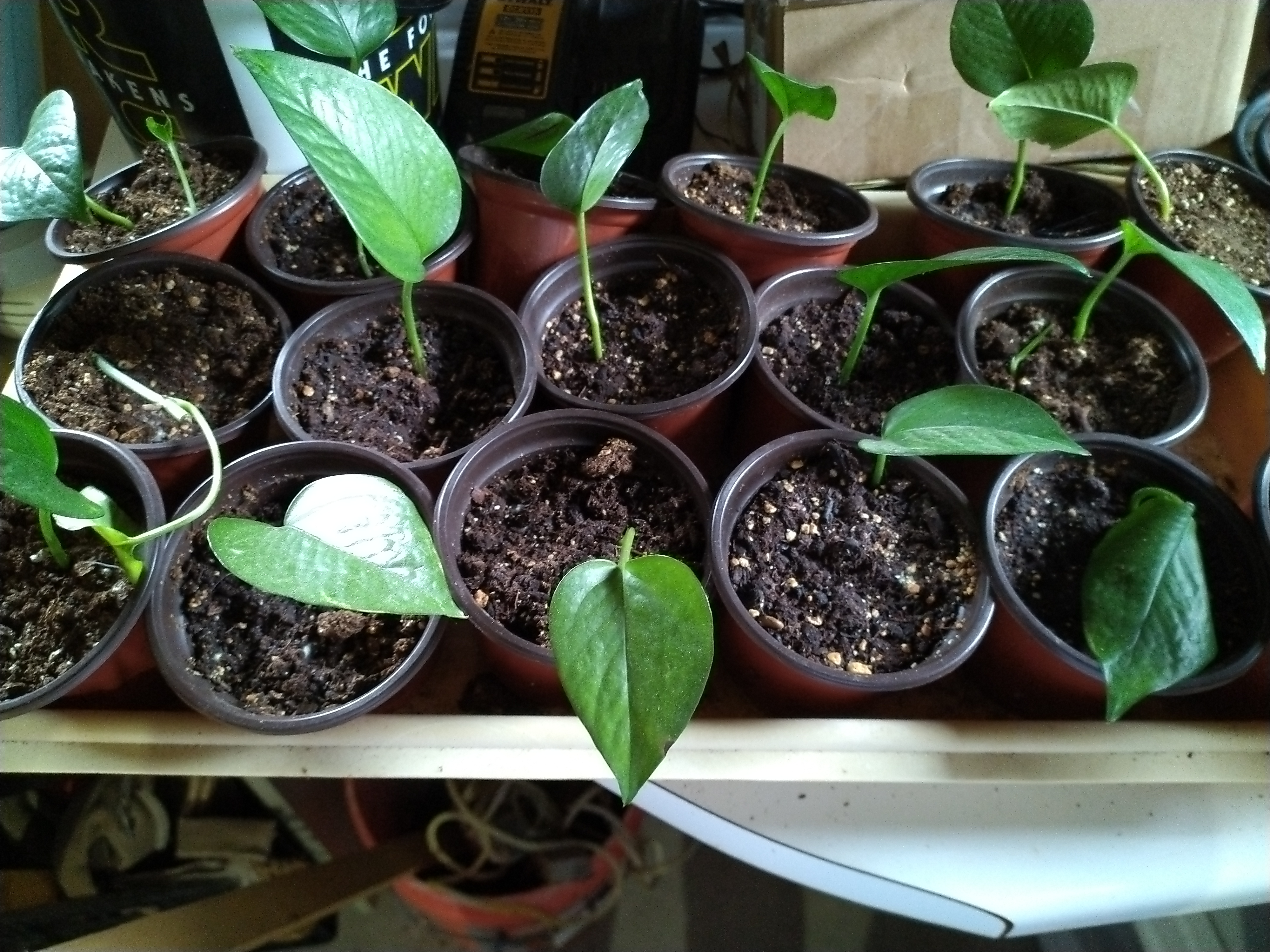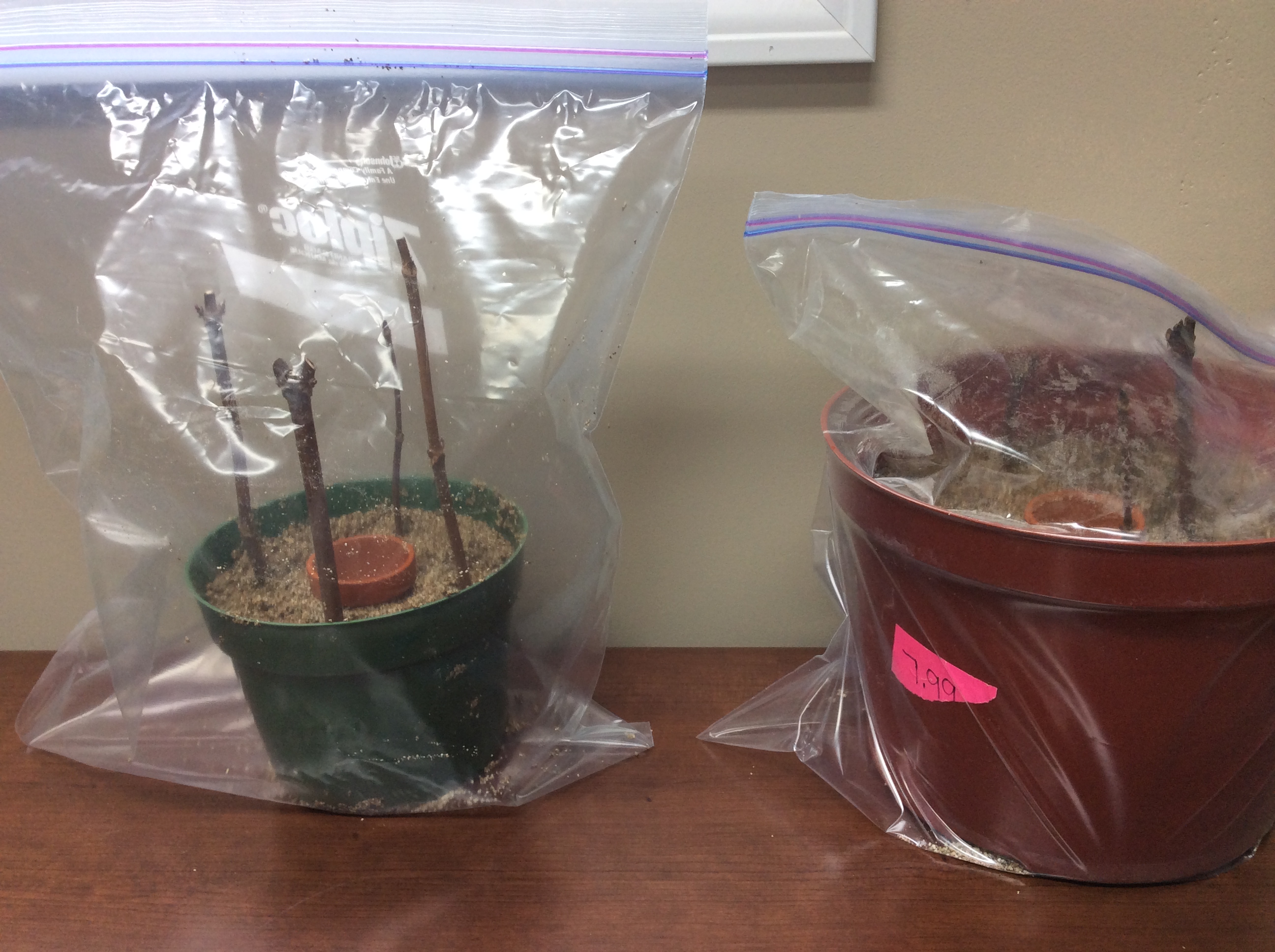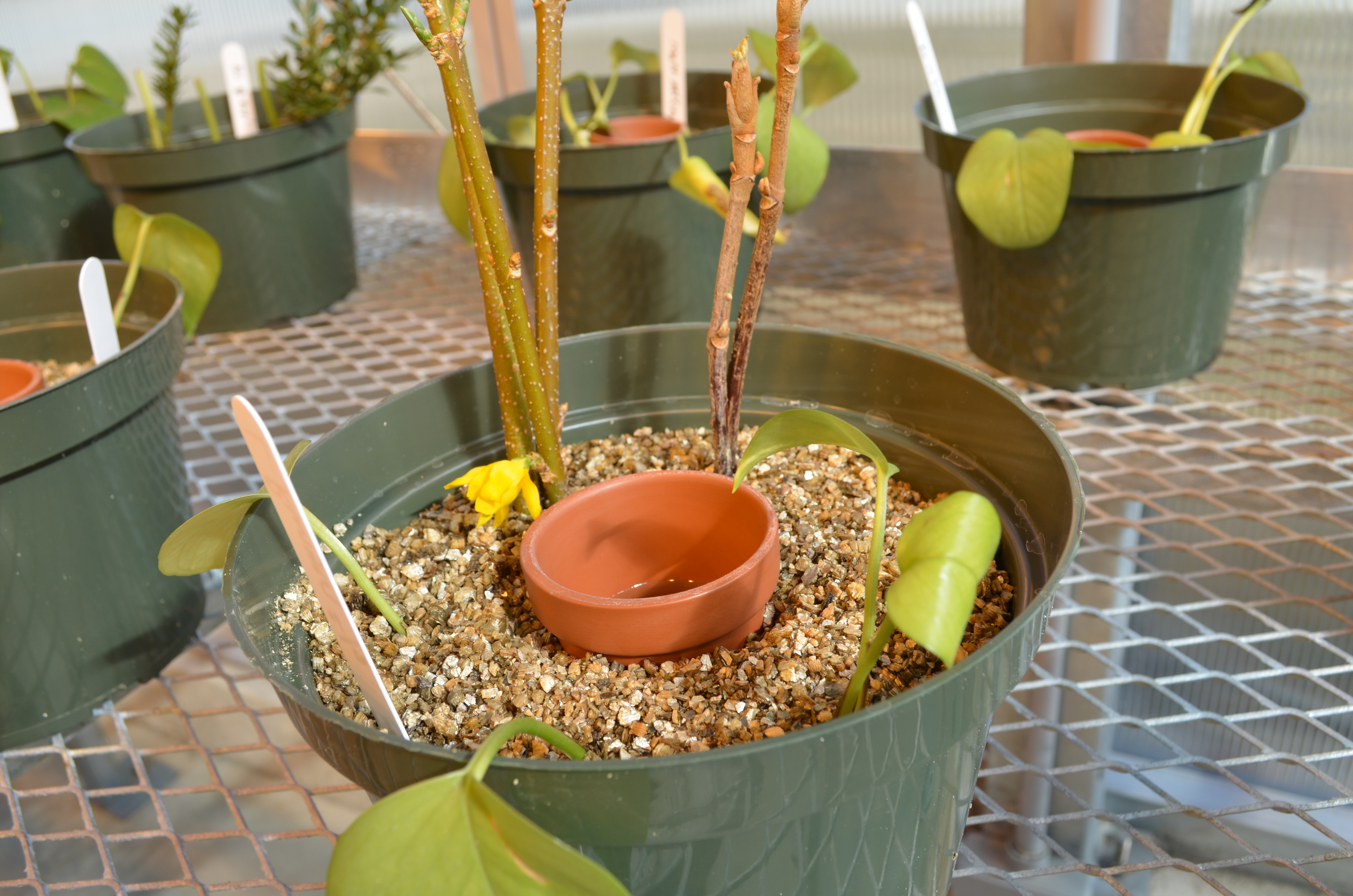
To my fellow Illinois gardeners – I know these cold winter days can feel long and dreary. One way to combat the winter blues is by propagating your houseplants. After all, your houseplants are stuck inside with you, so why not have some fun with them?
Plant propagation is essentially creating new plants from existing ones. Luckily for us winter gardeners, many houseplants are easy to propagate. And let's be honest, can you ever have too many plants?
There are several propagation methods to choose from, but the method you select depends on the plant you're trying to grow. When it comes to houseplants, three common methods are cuttings, division, and air layering. Since each method has its own complexities, let's focus on cuttings.
Propagate with Cuttings
As the name suggests, propagating by cuttings involves cutting off a piece of plant tissue to create a genetic clone of the original plant by initiating roots at the cut end. In other words, we're going to grow roots from a stem. The idea that you can switch vegetative cells into root cells is what first fascinated me about plants. Plant science is truly amazing! Also, the fancy (scientific) word for a cutting is propagule.
There are different types of cuttings, but let's specifically look at leaf cuttings and stem cuttings.
Stem cuttings usually consist of the tip of a branch or twig with a few attached leaves and leaf buds. The length can vary from 3 to 6 inches, but I prefer to make my cuttings slightly longer so I can trim them as needed before sticking them into a soil-free mix. Houseplants commonly propagated by stem cuttings include Dracaena, Croton, Holiday Cactus, Pothos, and many more!
Leaf cuttings consist of the leaf blade alone or the entire leaf, which includes the leaf blade and petiole (the stalk attaching the leaf to the stem). Many houseplants that we propagate using stem cuttings can also be propagated using leaf cuttings. However, leaf cuttings tend to take longer to develop into a new plant. Houseplants commonly propagated by leaf cuttings include Jade, African Violet, Kalanchoe, and Mother-in-law's Tongue.
What propagation method works best for your houseplant? Check out our list of houseplants and recommended propagation methods.
When propagating any plant, choose healthy material. Since it takes time for cuttings to root, damaged or diseased plant material will reduce the chance of success.
Sticking (Planting) Your Cuttings
Cleanliness is crucial as we need to keep the humidity high around these cuttings. Sterilize everything that will come in contact with plant material, including scissors and pots. A wider six to eight-inch azalea pot can be used to root multiple cuttings in one container, or you can use individual smaller containers. why do I call out azalea pots? Because they are wide and shallow. Punch a couple of holes in the bottom of most food storage containers and you've got something similar to an azalea pot.
Prepare your stem cuttings by trimming them with sterile scissors or pruners. I will typically trim my initial cutting down to about three inches with the bottom cut end near a node (the area on the stem where a leaf used to grow). Then I will strip off foliage, leaving only three to two leaves near the upper tip of the cutting. Preparations varies by species, but this is a general process that will work.
You'll be sticking the cut ends of your cuttings into an inert propagation medium. These mediums are inert because we don't need them to provide nutrients or hold water. All the potting medium needs to do is hold the cutting in place. Ensure the potting medium is watered (avoid oversaturation as it can cause rot if the potting mix stays too moist). Popular mediums include perlite, vermiculite, or soil-free potting mix.
Before sticking your cuttings into the potting medium, you can dip the cut end into rooting hormone. This helps trigger the initiation of root cells in the stem tissue. Pour a small amount of rooting hormone into a separate dish. If any of your cuttings are diseased, this will prevent contaminating your entire bottle of rooting hormone. I prefer to ensure a node gets some root hormone on it. Also, it is important to make sure a few nodes will be stuck into the potting medium. You do not typically worry about burying nodes with leaf cuttings as these are often sticking the base of the leaf or petiole into the medium. When sticking your cuttings into the medium, it can be helpful to use a pencil to create a hole so the rooting hormone doesn't rub off.
Some may be exclaiming, "Skip the pots and medium and use water." Not all houseplants respond well to being rooted in water. Plants rooted in water often have very weak roots that do not pot up well into soil and will struggle. But if all you have is a houseplant and a glass of water who am I to stop you? Be sure to refresh the water in the container when it starts to get cloudy. Houseplants that I have successfully rooted in water are Pothos and Philodendrons.
Propagation Chamber
For most in-home propagation fun, you will cover the container with a large plastic bag. This makeshift "propagation chamber" will create artificially high humidity. This is important since the cuttings don't have roots to take up moisture, and the leaves will continue to lose water. You may want to have a spritz bottle of water to spray inside the chamber if you notice it begins to dry out. Place the container in a sunny location but avoid direct sunlight, as direct sunlight and a plastic covering can burn the cuttings. Some plants, like Jade, don't do well with plastic covering as excessive humidity can cause rot issues. Jade roots better in a sand-based rooting medium.
If your wintertime propagation begins to snowball into more than just a hobby you can scale up your propagation chamber to a shelf in a basement or greenhouse with trays of cuttings protected underneath a plastic sheet or small propagation tent. Larger propagation chambers benefit from automated overhead spraying or fogging of the cuttings. While I do not have this setup, a guy can dream.
How Long Will it Take to Root Cuttings?
The time it takes for roots to form varies greatly from plant to plant. Some may form roots quickly, while others may take weeks. Keep a close watch on the cuttings and monitor for any root issues and adequate moisture. Don't let the planting medium dry out! If cuttings begin to rot, the moisture level is too high – either the humidity is too much, or the soil medium is too wet, or both. Remove any cuttings that have begun to rot and reduce humidity/moisture as needed.
The way I test to see if the cuttings have rooted goes against what my professor taught me. I will walk by and give the cuttings the slightest of tugs to see if there is any resistance. Why would my professor mark me down for this technique? Because the newly forming roots on a leaf or stem are very fragile and can be easily broken. I may even dislodge and lose any rooting hormone powder by moving the cutting ever so slightly.
The preferred method is to use some type of utensil (a small spoon or butter knife works well) to dig up the cutting from the side so that you do not pull up on the cutting, but rather lift it up along with the medium surrounding the cut end. Many times I will use the plastic label in the pot to dig up cuttings.
How Do I Know When There are Enough Roots on My Cutting to Pot Up?
Transitioning out of the propagation chamber into a new pot can be tricky. After waiting for weeks, I am usually very anxious to get the cuttings potted up. One recommendation of what to look for in terms of root development is to have one to four healthy roots. One tip from my old instructor is the roots should be as long as the cutting.
Once the cuttings have rooted, transplant them to individual containers if planted in flats or multiple cuttings in a single container. To reemphasize, it is very important to protect those roots when digging them up using your spoon or butterknife of choice. Monitor closely as the transition to less humidity can cause some shock to the plants.
You must know I'm bored because I pulled out my old plant propagation textbook to help with writing this article. I haven't looked at this book in almost 20 years! Whether you spend time flipping through textbooks or propagating houseplants, it’s obvious we're all eagerly awaiting the signs of spring. And it will be here before we know it!
Good Growing Tip of the Week – You can stick a small clay pot in the middle of your larger pot of cuttings. Fill the clay pot with water, which will slowly diffuse into the medium and keep the humidity up near the cuttings. If the clay pot has a hole in the bottom, plug it with a tiny tapered cork or putty.
Sign up for our emails! Want to get notified when new Good Growing posts are available? SIGN ME UP
Give us feedback! How helpful was this information (click one): Very helpful | Somewhat helpful | Not very helpful
MEET THE AUTHOR
Chris Enroth is a horticulture educator with University of Illinois Extension, serving Henderson, McDonough, Knox, and Warren counties since 2012. Chris provides horticulture programming with an emphasis on the home gardener, landscape maintenance personnel, and commercial landscapers. Additional responsibilities include coordinating local county Master Gardener and Master Naturalist volunteers - providing their training, continuing education, advanced training, seasonal events, and organizing community outreach programs for horticulture and conservation assistance/education. In his spare time, Chris enjoys the outdoors, lounging in the garden among the flowers (weeds to most).


